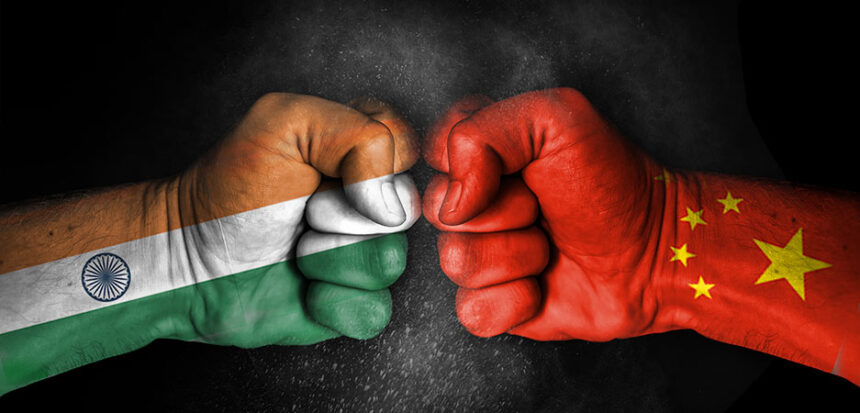China Geopolitical Pivot: Why India’s Elites Need Not Fear the Shift
There is a sort of reflexive fear and anxiety among our elites about a substantial pivot in India’s relations away from the United States and towards China which they feel cannot be trusted. This feeling is so strong that even after the humiliations President Trump has heaped on India regularly since Prime Minister Modi’s extremely unpleasant visit to the US this February, it is felt that India should endure insults and still try to make up with the US.
This is understandable because the upper caste Indian policy influencers – comprising tech business owners, the bureaucracy and political class – have organic links with American society via families settled there for decades. So the US has this inherent advantage over China in the crafting of policy towards the two countries.
That is why one is not surprised that the overwhelming opinion from think tanks and foreign policy analysts in New Delhi and tech entrepreneurs in the south, is in favour of somehow riding the ever rising tide of Trump tariffs, insults and humiliations.
Even after the imposition of 50% tariffs on Indian goods exports to the US and many other associated threats, there is a general sentiment that one should be careful about dealing with China as it cannot be trusted for various reasons, most notably for its real time operational defence tech cooperation with Pakistan.
Of course, before China entered this space, US defence cooperation with Pakistan was a reality India swallowed for decades. We are told that even in the Operation Sindoor episode, it was the possibility of US F-16 fighter aircraft and American engineers getting hit in the crossfire at a Pakistani air base is what partly triggered the urgency of Trump’s quest for a ceasefire. So India has to practically endure both Chinese and US involvement in Pakistan’s defence capabilities in future.
Also, previously held differentiators between the US and China in terms of the formers’ value system and its alignment with India are also blurring with Trump’s own authoritarian instincts testing the traditional American institutional and democratic framework on a daily basis. The US is probably as much of a surveillance driven society – with every student’s social posts being watched in real time – as some of the quasi democracies in East Asia today.
Given this reality, what kind of pivot away from the US and towards China will be acceptable to Indian elites is a question which is now being debated . One argument being made is India could act like some of the East Asian or Gulf nations who combine strong security ties to the US with deep economic engagement with China. Saudi Arabia, the UAE, South Korea, Singapore, Indonesia etc. all fall in this category.
Here, the only challenge for India is to persuade the US to tolerate Russia as a co-provider of defence tech partnership. Will Trump be amenable to this geopolitical cohabitation is an open question. Perhaps a resolution of the Ukraine war with some credit to Trump may help resolve this problem.
Since geo-economic transactionalism is largely driving Trump’s present world view and the radical changes that he is proposing, India can at the very least normalise its bilateral economic ties with China to the pre-Galwan times as they existed in the beginning of Modi’s first term as PM – with an open, non discriminatory trade and investment policy regime towards China. This is the least China would expect in order to observe the spirit of the resolution India signed on to at the SCO summit in Tianjin earlier this month.
For instance, Press Note 3 of 2020, which puts all Chinese investment in the automatic negative list to be scrutinised case by case, will have to be done away with. The government will have to remove the assorted bans against Chinese apps and generally allow a non-discriminatory investment regime to China. Opening up to Chinese investments in Indian startups is the easiest thing to do.
Some of the most successful listed companies today like Paytm, Zomato etc. had large Chinese incubating investments initially. In short, Indian businesses could do with a renewed dose of Chinese capital investment. The Economic Survey last year stated this very clearly.
Later, the Secretary, Industrial Promotion said India would be committing self harm by not opening up to Chinese investments in future technologies. Many economic ministries and even business houses echoed this sentiment.
Now is the time to open up to China and let investments happen
Now is the time to open up to China and let investments happen in Electric Vehicles, EV batteries, solar power generation, transport infrastructure etc. China has half the world’s installed capacity of solar power generation which can link up with India’s own solar mission in a structured manner. At present, only the Adani group, with its clout, is bringing Chinese equipment and engineers in the solar power sector on scale amidst myriad restrictions.
Why can’t this become more open and easy for all businesses? This is indeed a no brainer. This would merely signal a normalisation of economic relations. This does not constitute a sharp or undesirable pivot towards China. Meanwhile, the United States can remain India’s strategic partner on many other levels.
In fact there could be a neat division of India’s engagement with the US and China. The US remains India’s most valuable partner in the services sector. Trump has not put any tariffs or taxes on India’s services exports. India’s services exports ( dominated by IT services and the Global Capability Centres doing cutting edge research in India for US and European MNCs) have in recent years grown to roughly the same level as our total manufacturing exports net of petroleum products and gems and jewellery. Services exports are growing at double digit compared to a mere 1.5% annual growth in India’s manufacturing exports in recent years. Soon, services exports will leave manufacturing far behind.
So the dynamic part of India’s exports, i.e. services, remains intact and is the basis of the future strategic partnership with the US. This will also cover the non linear growth in AI related business partnerships likely between US and Indian companies in the years ahead. Of course, we should let the US compete with China in AI adoption based on cost and competencies. Deep Seek has opened everyone’s eyes in this respect.
So there is still a lot going for the India-US strategic partnership. India should ideally engage with China to boost manufacturing and infrastructure while the US can play a big role in the services partnership. The two can easily co-exist.
In conclusion, a partial pivot towards China need not unduly worry the ruling Indian elites. There is room for both partnerships to thrive. All that is happening is instead of 100% of Indian eggs being placed in the US basket it is possible that some 40% get shifted to China’s, especially in non security-sensitive areas of business and economic activities. That seems like a fair deal even from the perspective of multi-alignment in geopolitics which Donald Trump is inadvertently pushing India towards.
Also Read: Poland Shoots Down Russian Drones During Airspace Intrusion Amid Russia’s Ukraine Strikes







